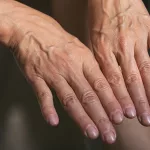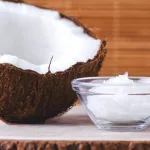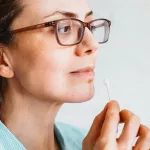What is hand reflexology?
Hand reflexology is a therapeutic massage approach that applies pressure to specific reflex zones on the hands. The idea is that these zones correspond to different organs and systems in the body, and that stimulating them can ease symptoms elsewhere.
There’s limited evidence supporting hand reflexology’s advantages. Many of the trials investigating its effects have been small and produced inconsistent results.
Still, these studies didn’t report significant risks or adverse health outcomes linked to hand reflexology (although pregnant people should avoid it, as noted below). Additionally, numerous personal accounts describe people who tried it and experienced relief.
Read on to discover more about the research behind hand reflexology and some common pressure points you can use.
:max_bytes(150000):strip_icc()/teenage-girl-getting-hand-massage--pforzheim--baden-wuerttemberg--germany--europe-483695191-59f0f8be845b340011e73543.jpg)
For anxiety
A 2017 trial found that hand reflexology lowered anxiety in patients preparing for coronary angiography (a minimally invasive test used to evaluate heart disease). Participants who received hand reflexology or a simple hand massage reported less pre-procedure anxiety.
For easing anxiety, press the Heart 7 (HT7) point. It’s located just under the wrist crease on the outer side of your hand. There’s a slight depression there. Massage this spot for one minute on each hand.
For constipation
Reflexology might help alleviate constipation caused by both physical and emotional factors. A small 2010 study reported that 94 percent of participants experienced fewer constipation symptoms after six weeks of hand reflexology.
Many participants also saw reductions in anxiety and depressive symptoms, implying that hand reflexology could be particularly effective for stress-related constipation. However, this research only included 19 people, so larger studies are required.
To try it, locate the Large Intestine 4 (LI4) point. It sits between your thumb and index finger. Use your fingertips to press into the fleshy web on your right hand for one minute. Then repeat on the left hand.
Many people also find this point useful for general pain relief.

For headaches
Reflexology may help with headaches, especially those linked to stress or anxiety. A 2015 review noted that reflexology had beneficial effects on headaches. After six months of treatment, over half of participants experienced fewer symptoms. Almost 25 percent reported their headaches had resolved entirely, and roughly 10 percent were able to discontinue headache medications.
Use the same LI4 pressure point described above. Massage and squeeze the fleshy area, concentrating on tender spots.
You can also try the Pericardium 6 (P6) point. This is located a few inches below your wrist crease between the two tendons. Gently rub this spot for one minute on both hands.
Finding a reflexologist
You can practice reflexology at home, but you may also consult a reflexologist, a professional trained in the technique.
Look for someone certified by the American Reflexology Board. They can help design a plan to address the symptoms you’re experiencing.
Is it safe?
Hand reflexology is generally safe, though there are some precautions.
Warning
- Pregnant individuals should avoid acupressure because certain points can trigger contractions. If induction is intended, acupressure should only be applied with your physician’s consent.
Talk to your doctor before trying hand reflexology if you have:
- circulatory disorders affecting the feet
- inflammation or blood clots in the legs
- gout
- thyroid conditions
- epilepsy
- low platelet levels
- diarrhea
- bacterial or fungal skin infections
- open wounds
- hand inflammation
- fever or any contagious illness
Also, don’t discontinue any treatments prescribed by your provider unless they advise you to do so.
The bottom line
Hand reflexology may be a helpful method for easing pain and stress-related symptoms. Keep in mind that many of its purported benefits lack strong scientific validation.
Still, a hand massage is inherently soothing. Lowering stress and entering a calmer state can support immune function and generally make you feel better.
Continue any ongoing medical treatments recommended by your clinician, and stop applying pressure if your symptoms worsen.


















Leave a Reply
You must be logged in to post a comment.